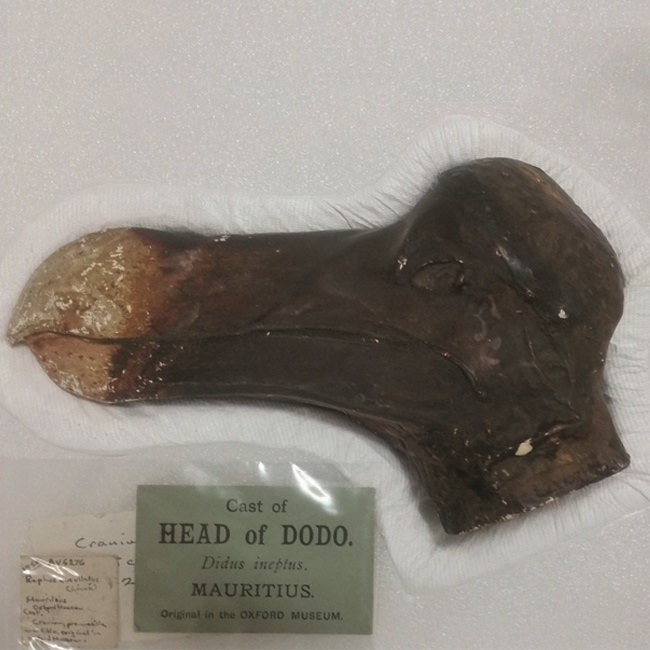The Dodo was a flightless pigeon endemic to Mauritius in the western Indian Ocean. It became extinct within 100 years of the island's discovery, hunted by sailors and invasive animal species. The last widely accepted sighting of a Dodo was in 1662.

By the 19th century only four specimens were known, all of which had been brought to Europe in the early 17th century. Among these was the dried head and leg of a living bird known as the Tradescant specimen, the only soft tissue of the Dodo that remains today. Once a complete mount, this specimen was owned by King Charles I’s gardener and was bequeathed to Oxford University. It fell into poor repair and, in 1755, was ordered to be destroyed. Only the head and the foot were saved from the fire. These objects are now in the Oxford Museum of Zoology. Canterbury Museum acquired a cast of this skull in 1871 from Oxford in exchange for kiwi skeletons.
Since the early 1860s, a large number of subfossil bones of Dodo have been collected on Mauritius. Canterbury Museum's bones were received from the Mauritius Institute in 1912 in exchange for moa bones sent by Museum director Edgar Waite. Dodo bones are sought after in the international market with a complete skeleton recently selling for over NZ$600,000. Canterbury Museum has one of the largest collections of their bones outside Europe.





